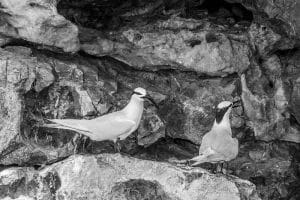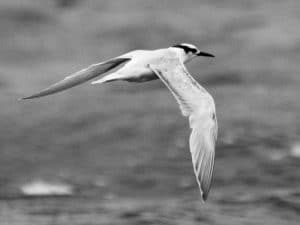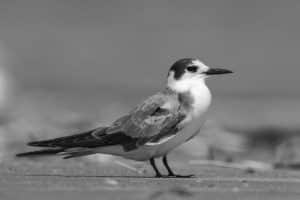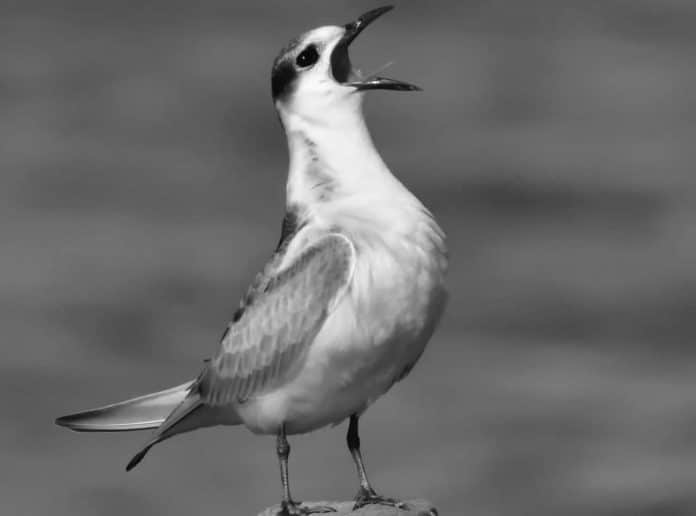Introduction to the Black-Naped Tern
The black-naped tern (Sterna sumatrana) is a medium-sized seabird that belongs to the family Laridae. It is widely distributed throughout the tropical and subtropical regions of the Indian and Pacific Oceans, including the coasts of Africa, Asia, and Australia. The black-naped tern in Tanzania is easily recognizable by its black cap and nape, white forehead and underparts, and long, slender wings.
Habitat and Distribution of the Black-Naped Tern in Tanzania

The black-naped tern is a common resident bird along the coastal regions of Tanzania, including the islands of Zanzibar, Pemba, Mafia, and Fanjove. It is also found along the shores of Lake Victoria and other inland water bodies. The black-naped tern prefers sandy beaches, rocky shores, and offshore islands as its habitat. It is also commonly seen in estuaries, lagoons, and along river mouths.
Physical Characteristics and Behavior of the Black-Naped Tern
The black-naped tern is a medium-sized bird that measures around 30 cm in length and weighs between 60-100 grams. It has a black cap and nape, white forehead and underparts, and a greyish-black mantle. It has a long, slender bill and long, pointed wings. The black-naped tern is a graceful flyer, and can often be seen hovering and diving for fish in shallow waters.
Breeding and Nesting Habits of the Black-Naped Tern
The black-naped tern breeds in large colonies in the coastal regions of Tanzania, usually on offshore islands. It typically lays one to three eggs in a shallow scrape on the ground, often in the open or under vegetation. Both parents take turns incubating the eggs and caring for the chicks. The chicks fledge after around three weeks and become independent after a further two weeks.
Migration Patterns of the Black-Naped Tern

The black-naped tern is a migratory bird that breeds in Tanzania between September and January, and then migrates to the northern hemisphere for the rest of the year. It can be found as far north as the Korean Peninsula and as far south as Australia during its migration.
Conservation Status and Threats to the Black-Naped Tern in Tanzania
The black-naped tern is classified as a species of “Least Concern” by the International Union for Conservation of Nature (IUCN). However, its breeding colonies in Tanzania are threatened by habitat destruction, disturbance, and pollution. The black-naped tern is also hunted for food and for its feathers, which are used in traditional clothing.
Best Locations for Birdwatching the Black-Naped Tern in Tanzania
The best locations for birdwatching the black-naped tern in Tanzania are offshore islands such as Zanzibar, Pemba, Mafia, and Fanjove. The terns can be seen flying over the beaches and shallow waters, often in large flocks. They are also commonly seen in estuaries, lagoons, and along river mouths. Some of the best birdwatching spots for the black-naped tern include Bweni Village, Nungwi, and Kendwa in Zanzibar.
Tips for Observing and Photographing the Black-Naped Tern

To observe and photograph the black-naped tern, it is best to approach slowly and quietly. Avoid sudden movements or loud noises that might disturb the birds. Use a telephoto lens to capture the birds in flight or while hunting for fish. It is also helpful to position yourself at a high vantage point, such as a hill or a building, to get a better view of the birds.
Other Bird Species Found in the Same Habitat as the Black-Naped Tern
The coastal regions of Tanzania are home to a diverse range of bird species, many of which inhabit the same habitats as the black-naped tern. Some of the other bird species that can be found in the same habitat as the black-naped tern include the common sandpiper, grey plover, white-fronted plover, lesser sand plover, and crab plover.
Conclusion: The Black-Naped Tern – A True Seaside Spectacle in Tanzania
The black-naped tern is a beautiful and graceful bird that is a true spectacle along the coastline of Tanzania. Its distinctive black cap and nape, together with its long, slender wings, make it a joy to watch and photograph. While its breeding colonies are threatened by habitat destruction and other factors, the black-naped tern remains a common resident bird in Tanzania. Birdwatchers and nature lovers can experience the beauty and grace of this bird by visiting the many offshore islands and coastal regions of Tanzania.

































